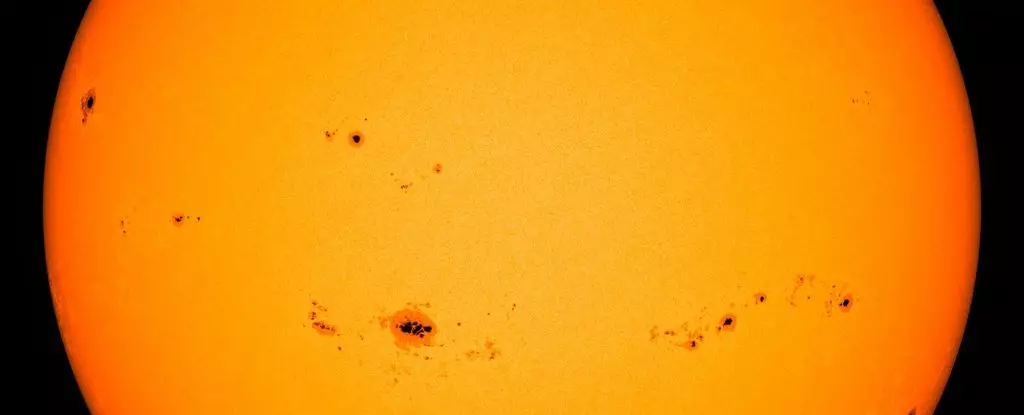Recently, the announcement by NASA, NOAA, and the Solar Cycle Prediction Panel has resonated across the scientific community and beyond: we are officially entering a solar maximum period. This marks a pivotal phase in the Sun’s roughly 11-year activity cycle, characterized by a surge in sunspots, solar flares, and coronal mass ejections (CMEs). Essentially, this is the time when the Sun is most active, and it heralds a series of dramatic events in our solar system.
Solar activity doesn’t occur in isolation; it has broad implications for Earth, potentially affecting satellite operations, communication systems, and even power grids. The most critical takeaway from these developments is that while we are witnessing a temporary peak in solar activity, the forthcoming months promise to bring even more intrigue as this activity continues to evolve. Understanding this cycle’s dynamics is paramount in anticipating its impacts on our technology-driven world.
Despite our advancements in solar science, there is still a notable gap in understanding the intricacies of the solar cycles. While the cycle spans approximately 11 years, variations exist, making it challenging to predict both the duration and intensity of each cycle accurately. According to solar astrophysicist Michael Wheatland, the solar dynamo—responsible for generating the magnetic fields that lead to solar activity—is not yet fully understood, making predictions notoriously unreliable.
Other factors complicate our understanding even further; for instance, although solar maximum has been declared, it is uncertain when the peak of solar activity will specifically occur within this cycle. Meteorologist Elsayed Talaat notes that precise assessments of peak activity may take months or even years after the solar maximum is underway. This uncertainty leaves researchers and enthusiasts on the edge of their seats, eager for insights into the Sun’s behavior.
Solar activity can be observed through several phenomena, primarily the appearance of sunspots. These are localized areas on the solar surface where magnetic fields are intensified, causing temporary cool spots relative to the rest of the Sun’s surface. During solar minimum, these sunspots are scarce, whereas during solar maximum, they proliferate, resembling freckles on the Sun’s face. This increase in sunspots correlates with powerful solar outbursts, including solar flares and CMEs.
Solar flares emit short bursts of energy and can be incredibly disruptive, causing radio blackouts on Earth. In contrast, CMEs involve massive expulsions of solar material and magnetic fields that travel across the solar system. When these CMEs interact with Earth’s magnetic field, they can induce geomagnetic storms that pose risks to technological systems. However, there is a silver lining; the same interactions that disrupt technology can also create stunning auroras, as solar particles collide with our atmosphere.
Our current solar cycle is proving to be more vigorous than initial forecasts from NASA and the NOAA. Despite being strong, it is not unprecedented; significant solar flares, such as the recent X9.0 flare on October 4, reinforce this point. Although it is among the most intense solar events recorded, it falls short of the extremes observed in previous cycles throughout history.
Interestingly, while some scientists initially predicted a weaker cycle, others successfully anticipated the intensity of current activities with remarkable accuracy. This disparity raises questions about our understanding of solar dynamics and could spark new research, resulting in refined predictive models for future cycles.
As we delve deeper into this solar maximum, a clear picture emerges of the significance of studying the Sun’s cycles—not merely for practical implications here on Earth, but also for enriching our scientific knowledge. The Sun remains a central player in the intricate dance of solar and terrestrial dynamics. While we brace ourselves for a stormy weather forecast in space, we also look forward to the potential breakthroughs in our understanding of solar behaviors and influences.
The solar maximum not only heightens our awareness of solar activity but also offers a canvas for further scientific exploration. As we watch the skies and prepare our technologies, the prospect of unraveling more about our Sun’s complexities remains an ongoing journey for scientists and enthusiasts alike.

